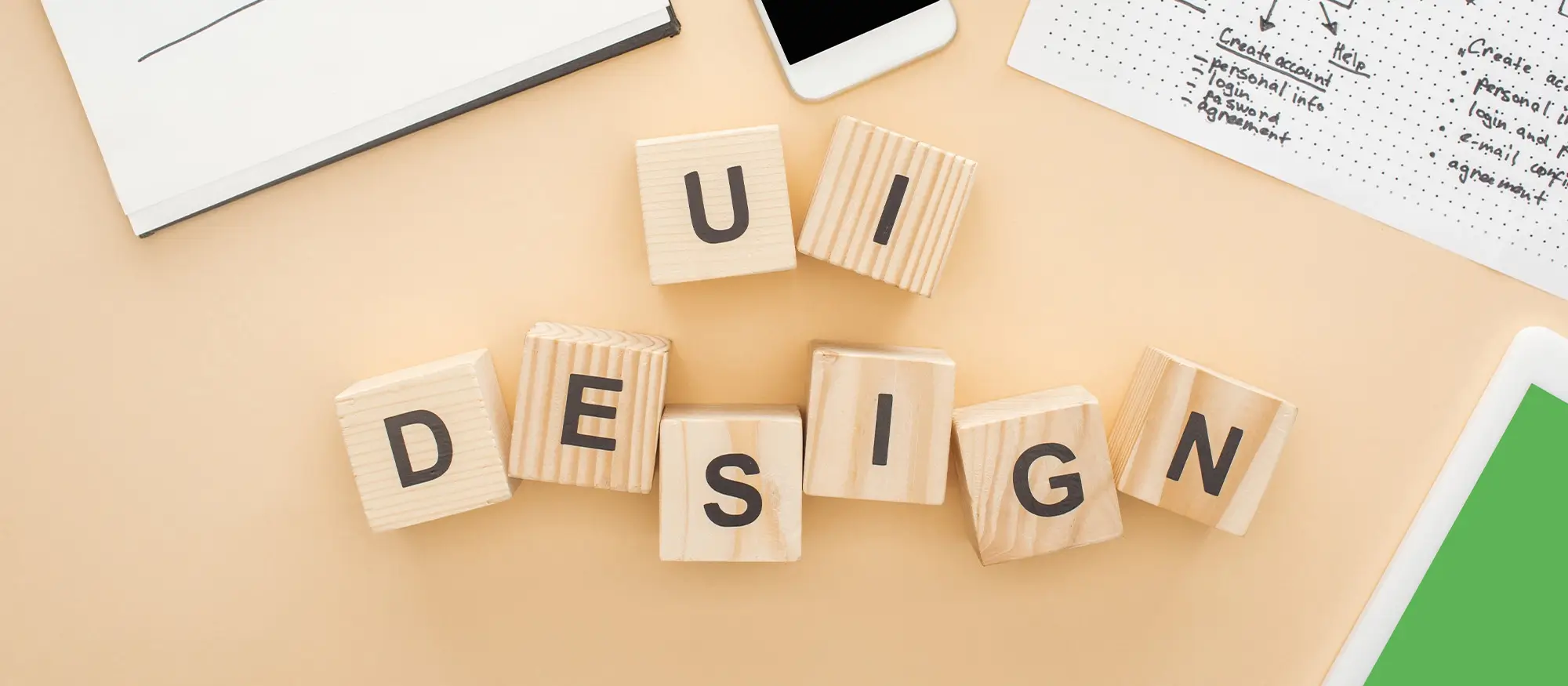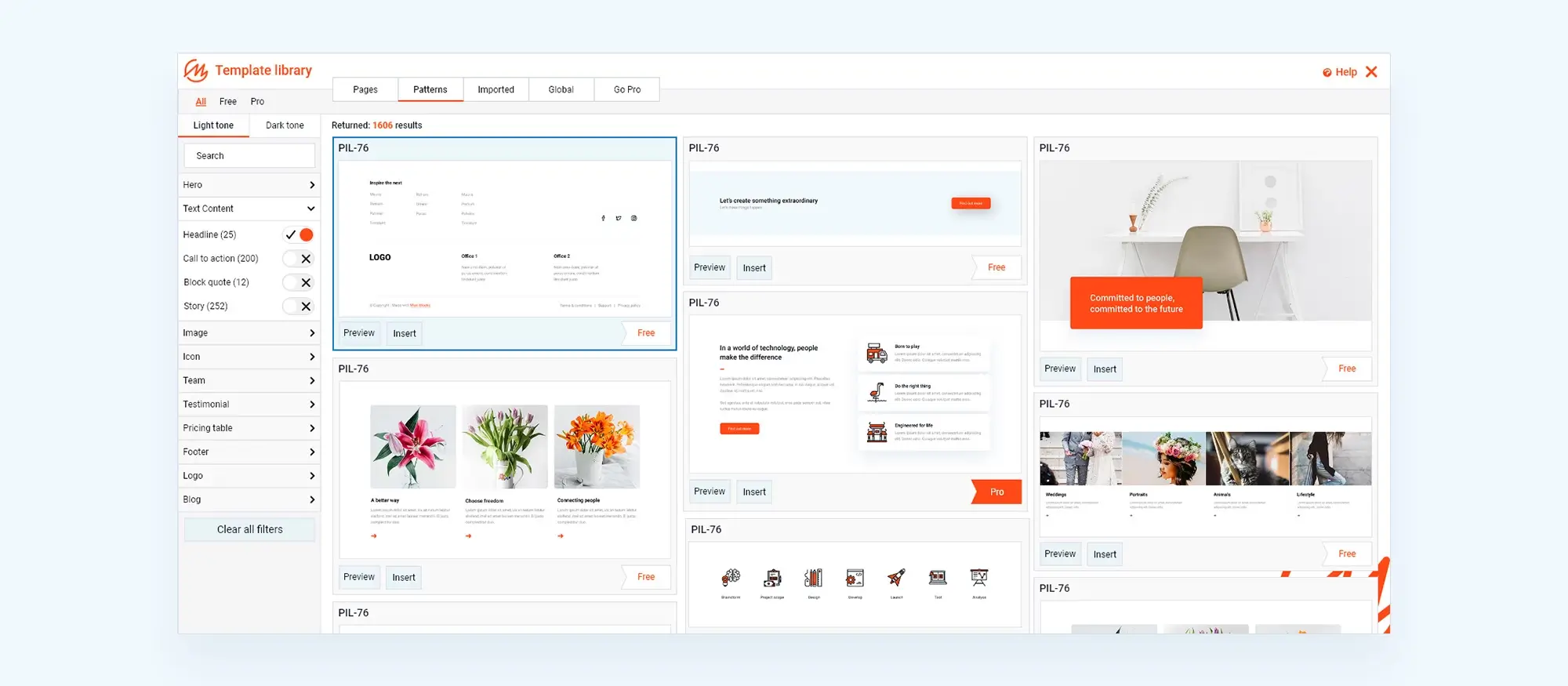WordPress block compatible themes. The future of WordPress design
Try MaxiBlocks for free with 500+ library assets including basic templates. No account required. Free WordPress page builder, theme and updates included.

Block-compatible themes in WordPress are made to work with the block editor, giving you the ability to customise every part of your website using a visual drag-and-drop interface. With these themes, you can edit headers, footers, navigation and content directly in the Site Editor. They offer a flexible and modern way to design your site without needing to code.
Updated 15th May 2025
Key takeaways
- Block compatible themes are specifically designed for the Gutenberg editor, offering full site editing capabilities and a block-based approach to web design.
- They provide extensive customization options, responsive designs, and are often optimized for better performance and SEO.
- Transitioning to a block compatible theme involves careful selection, testing on a staging site, and customization to align with brand identity.
What are block compatible themes in WordPress?
Block compatible themes in WordPress are themes specifically designed to work seamlessly with the Gutenberg editor. They utilize a block-based approach for website building and customization, offering features like full site editing, template editing, global styles interface, and a variety of pre-designed block patterns. These themes ensure a coherent and flexible design process, significantly enhancing the user experience by facilitating extensive customization without the need for advanced coding skills.

What are block compatible themes in WordPress
A modern way to design with WordPress blocks
Block compatible themes are made to work directly with the Gutenberg block editor in WordPress. They give users a more flexible and visual way to build websites. With these themes, you can create layouts using blocks for content such as text, images and menus. This approach helps both developers and non developers design pages without needing to write code.
Why block compatible themes matter
Seamless integration with the block editor
These themes are fully integrated with the block editor. This means you can manage and customise every part of your site using a single interface. From the header to the footer, all elements are created and adjusted using blocks.
Full site editing for complete control
Block themes support full site editing. This lets you design your homepage, posts, menus and templates from one place. You can create your own templates for specific content types and apply consistent styles across your site.
Global styles for consistent design
You can adjust fonts, colours and layouts across your entire site using global styles. This keeps the look and feel of your pages unified and saves time when updating your design.
Built for modern websites
Responsive and accessible by design
Most block compatible themes are responsive. They adapt to different screen sizes automatically, making sure your site works well on mobiles, tablets and desktops. They are also built with accessibility in mind, helping you meet web standards and reach more users.
Designed for performance
These themes are lightweight and optimised for speed. They load only the assets that are needed for each page, helping your website run faster and improving user experience.
Easy customisation without code
You can customise your website using patterns and blocks without needing to write any HTML or PHP. Block patterns are pre designed layouts you can insert and modify to match your content and style.
Extend your site with compatible tools
Works with popular plugins
Block themes are made to support a wide range of WordPress plugins. Whether you need contact forms, eCommerce features or SEO tools, you can add them without compatibility issues.
Clean code for better SEO
The structure of block themes is optimised for search engines. Clean code and fast loading speeds help improve visibility and support your SEO goals.
A growing community and support
As more users and developers adopt block themes, the community continues to grow. This means more learning resources, better support and a wider choice of themes and tools.
Subscribe to our newsletter
How block compatible themes work and why they matter
Seamless integration with the WordPress editor
Block compatible themes are built specifically for the Gutenberg editor. They let you create pages by adding and arranging blocks that represent different types of content such as text, images, buttons and galleries. Every block includes visual controls so you can customise layout, colour, size and style without needing to write code. This integration means the design and content tools work exactly as expected, with full support for modern editing features.
Block patterns for faster design
Many block themes include pre designed block patterns. These are collections of blocks arranged in specific layouts such as hero sections, feature lists or contact forms. You can insert these patterns into your page and customise them immediately. This speeds up the design process and helps you keep a consistent style across your site.
Full control over every block
Each block comes with built in settings. For example, an image block lets you control size, alignment, captions and even custom classes. Text blocks allow changes to font size, colour and background. Because everything is built with the editor in mind, there are no compatibility issues and no need for external design tools.
Smarter use of global styles and templates
Block themes support global styles and templates, which means you can define the look and layout of your entire site in one place. Fonts, colours and spacing stay consistent across pages, and reusable templates help you manage content without repeating work.
Why block compatible themes are important
Enhancing the editing experience
The biggest advantage of using a block theme is how much easier it makes content creation. Everything is visual, so you can add, move and style elements directly on the page. This removes the need for complex setup or third party builders and helps you work more efficiently.
Simplifying content management
Block themes offer tools that make managing content easier. With templates and reusable blocks, you can create structured layouts and keep your design consistent. Updates take less time, and site-wide changes can be made in one place using global settings.
Saving time and improving results
By including patterns and pre designed elements, block themes reduce the time needed to build and launch a site. They are also built to load quickly and follow best practices for SEO and accessibility. This helps your site perform better and reach more people.
Block compatible themes offer a flexible and future ready way to design in WordPress. They support modern editing features, improve usability and give you the tools to build a website that works well on every level.

Popular block compatible themes for WordPress
Leading choices for flexibility and performance
Block compatible themes give you full control over your site’s design using the WordPress block editor. These themes are built for speed, adaptability and ease of use, making them suitable for a wide range of projects.
MaxiBlocks Go
MaxiBlocks Go is one of the best free block compatible themes available. Designed to work seamlessly with the Gutenberg editor, it provides a no-code visual building experience. It comes with access to a vast library of over a thousand design patterns, templates and icons. Lightweight, responsive and fully customisable, MaxiBlocks Go is ideal for freelancers, agencies or anyone managing multiple sites. It offers professional design tools without needing premium add-ons and stands out for its ease of use and design range.
Astra
Astra is known for its lightweight structure and wide compatibility. It includes a large selection of starter templates and offers advanced styling tools that integrate with the block editor. It loads quickly, supports responsive design and works well with a wide range of plugins, making it a reliable option for many types of websites.
GeneratePress
GeneratePress is focused on performance and simplicity. It offers a clean codebase and strong block editor support. With straightforward settings and excellent loading times, it’s well suited for users who value speed and want a theme that stays out of the way.
Neve
Neve offers a fast, lightweight experience with solid block editor integration. It includes multiple layout options and starter templates that are easy to customise. With good mobile responsiveness and extensive design controls, Neve fits well for users looking for flexibility in structure and style.
Blocksy
Blocksy is designed for advanced layout control. It includes a built in header and footer builder, flexible sidebars and extensive colour and typography options. It’s made for compatibility with both the block editor and other builders. Blocksy is ideal for users who want full visual control over their site layout without sacrificing performance.
Kadence
Kadence supports the block editor with a strong set of design features. It offers custom patterns, advanced styling controls and tools to manage layout, fonts and colours site wide. Kadence is a versatile option for users who want professional design tools that are accessible and efficient.
Choosing the best block theme for your project
MaxiBlocks Go offers the most extensive free design library with full block editor support, making it perfect for those who want creative freedom without premium costs. Astra and GeneratePress are strong choices for performance focused projects, with fast loading times and lightweight builds. Neve, Blocksy and Kadence provide more visual customisation options, ideal for users who need flexibility in layout and style.
Your choice depends on your project goals, but each theme here is fully compatible with the block editor and designed to help you build a fast, responsive and well styled WordPress site.
Build like a pro
How to choose the right block compatible theme
Key factors to consider for a reliable and future ready website
Choosing a block compatible theme means selecting one that supports modern WordPress tools while meeting your specific goals. It must work smoothly with the Gutenberg editor so you can take full advantage of its features. This includes full site editing, block patterns, global styles and custom templates. Without proper compatibility, you may face limits that restrict your creative control.
Performance and speed
A fast loading site offers a better user experience and can improve your SEO rankings. Look for a theme that is lightweight and uses clean code. Themes built for performance help keep bounce rates low and ensure that your site runs smoothly on all devices.
Customisation options
The more control you have over design settings, the easier it is to create a site that reflects your brand. Choose a theme that includes flexible layout options, global styles, font controls and custom block settings. This allows you to tailor every part of your site without touching code.
Ongoing support and regular updates
A well maintained theme stays compatible with the latest version of WordPress and keeps your site secure. Choose one developed by a team with a strong track record of updates, documentation and support. This ensures that you’ll have help if you need it and that your site won’t break when WordPress releases a new update.
Trusted feedback from users
Reviews and ratings can offer helpful insight into a theme’s performance and reliability. If a theme is consistently rated highly and receives positive feedback, it’s more likely to deliver a stable experience. This can also give you a sense of how responsive the developer is to bug fixes or feature requests.
Matching your theme to your website goals
Aligning with purpose and audience
Start by thinking about your site’s purpose. Whether it’s a blog, an online shop, a portfolio or a business site, your theme should support the structure and content types that best serve your visitors. Each layout and design choice should help guide users through your content in a way that makes sense for your goals.
Reflecting your brand identity
The theme you choose should support your brand’s visual identity. Fonts, colours and layout should match the tone of your brand, whether it’s professional and clean, creative and bold, or minimal and modern. Consistency helps build trust and keeps the user experience focused.
Planning for long term growth
Consider whether the theme can scale with your needs. As your site grows and you add more features, such as an online store, blog or newsletter, the theme should be flexible enough to support that growth without compromising speed or usability.
Testing before making a final decision
Many themes offer demos or limited trial access. Use this to explore the layout, check responsiveness and test how easy it is to customise. This hands on experience will help you understand if the theme is the right fit before you commit.
Choosing the right block compatible theme means finding a balance between design flexibility, performance and alignment with your website goals. When the theme supports both your vision and the tools offered by modern WordPress, you’ll have a strong foundation for building and maintaining a successful site.

Transitioning to a block compatible theme
Moving from a traditional theme to modern WordPress
Switching to a block compatible theme can feel like a big step, but with careful planning it becomes a smooth and rewarding process. A thoughtful transition allows you to take full advantage of the Gutenberg editor and modern WordPress features.
Preparing for the switch
Before making any changes, always start by backing up your current website. This gives you a safe point to return to if needed. Once you’ve done that, choose a block compatible theme that fits your site’s goals, brand identity and design needs. Look for one that is fully integrated with the block editor and has strong reviews, responsive design, and reliable support.
Download and install the new theme through your WordPress dashboard, but hold off on activating it. Set up a staging site as a safe place to test the new theme. This avoids disruptions to your live site while you work through the changes.
Testing and customisation
On the staging site, activate the new block theme and check every part of your website. Make sure all content appears correctly, from headings and images to navigation and forms. Use the editor to customise colours, fonts, spacing and layout. Update or replace block patterns as needed to match your brand identity.
Once your design is in place, test again to make sure everything functions as expected. After confirming that the new version works smoothly, you can replicate the changes on your live website.
Final checks and monitoring
After the theme is live, monitor your site closely. Watch for performance changes, styling inconsistencies or broken links. Keep an eye on your plugins too, especially if some were designed with older themes in mind.
Common issues and how to solve them
You may run into layout issues after switching themes. These often come from plugins or elements that no longer fit with the new design. Try deactivating plugins one by one to find any that might be causing problems.
If you notice missing features, explore WordPress plugins that offer similar functionality or consider adding custom code. Performance drops may also occur with heavier themes, but this can usually be fixed by cleaning up unused plugins or using optimisation tools.
Styling issues can happen when older content does not match the new layout. These can often be resolved by adjusting settings or applying small amounts of custom CSS. If needed, consult a developer to fine tune these details.
Final thoughts
Transitioning to a block compatible theme is an investment in the future of your website. It allows you to build faster, design more flexibly and manage your content with greater ease. While the process may take time and testing, the long term benefits from improved performance, better design control and compatibility with the latest WordPress features that make it well worth the effort.
WordPress blocks for layout design and customization
Learn how to use WordPress blocks to create stylish, responsive sections without code.
FAQs – WordPress block compatible themes
What are WordPress block-compatible themes?
WordPress block-compatible themes are themes built to work smoothly with the WordPress block editor, also known as Gutenberg. These themes support the use of blocks for building content layouts and are designed to make full use of block features such as patterns, template parts and Full Site Editing.
How do block-compatible themes enhance the editing experience?
They allow you to design pages visually, using blocks instead of relying on shortcodes or custom widgets. You can insert and arrange content with drag-and-drop ease, and apply styling options directly within the editor, which creates a faster and more flexible workflow.
What’s the difference between block-compatible and block-based themes?
Block-compatible themes support the block editor in content areas like posts and pages. Block-based themes go further and allow Full Site Editing, meaning you can also design headers, footers and templates entirely with blocks.
Are block-compatible themes responsive?
Yes, most modern block-compatible themes are built with mobile responsiveness in mind. This ensures your content looks good on all devices, including phones and tablets, without requiring extra setup.
Can I use block patterns with block-compatible themes?
Yes, these themes support block patterns, which are pre-designed layouts made from multiple blocks. You can insert these into any page and customise them to suit your content and style.
Do I need a plugin to use block-compatible themes?
No, you do not need a plugin to use block-compatible themes. However, you can extend functionality by adding plugins that offer extra blocks, design tools or integrations to suit your site’s needs.
Are there free block-compatible themes available?
Yes, many block-compatible themes are free. Examples include Twenty Twenty-Three, Blocksy, Neve, Astra, and GeneratePress. These themes are well-coded, lightweight and work well with the block editor.
Are block-compatible themes beginner friendly?
Yes, they are suitable for beginners. The block editor is visual and intuitive, and most block-compatible themes include helpful patterns, templates and documentation to get you started quickly.
Can I customise every part of the site with these themes?
If you are using a block-based theme that supports Full Site Editing, you can customise the entire layout, including headers, footers and global styles. Standard block-compatible themes let you customise the content area but may not allow full site editing.
Should I use a block-compatible theme for new websites?
Yes, if you’re building a new website in WordPress, a block-compatible theme ensures your site is future-ready, fast and easy to update using the native block editor. It also gives you greater flexibility and control over your design without needing a page builder.
WordPress itself
Official Website
wordpress.org – This is the official website for WordPress, where you can download the software, find documentation, and learn more about using it.
WordPress Codex
codex.wordpress.org/Main_Page – This is a comprehensive documentation resource for WordPress, covering everything from installation and configuration to specific functionality and troubleshooting.
WordPress Theme Directory
wordpress.org/themes – The official WordPress theme directory is a great place to find free and premium WordPress themes. You can browse themes by category, feature, and popularity.
maxiblocks.com/go/help-desk
maxiblocks.com/pro-library
www.youtube.com/@maxiblocks
twitter.com/maxiblocks
linkedin.com/company/maxi-blocks
github.com/orgs/maxi-blocks
wordpress.org/plugins/maxi-blocks

Kyra Pieterse
Author
Kyra is the co-founder and creative lead of MaxiBlocks, an open-source page builder for WordPress Gutenberg.
You may also like

